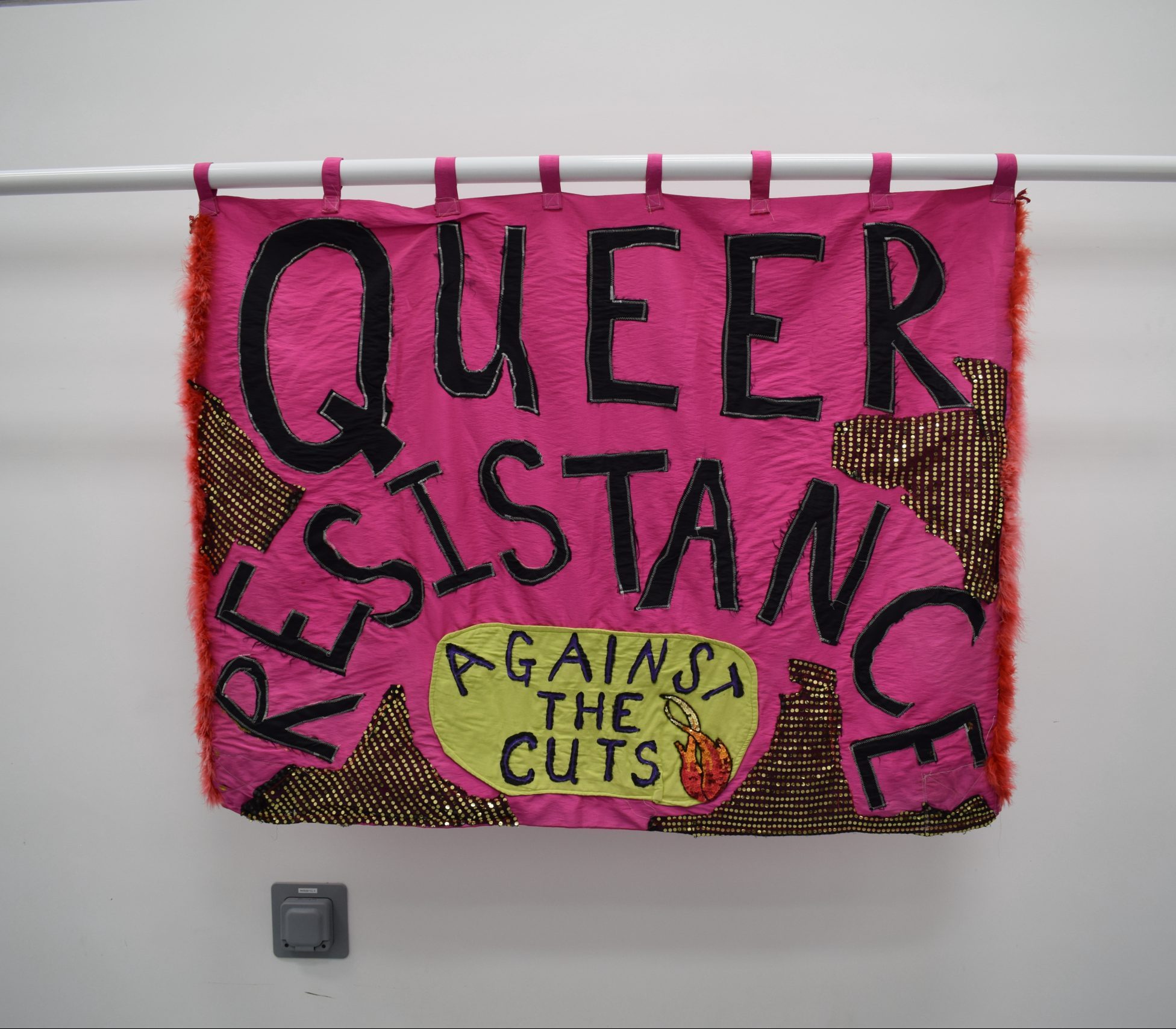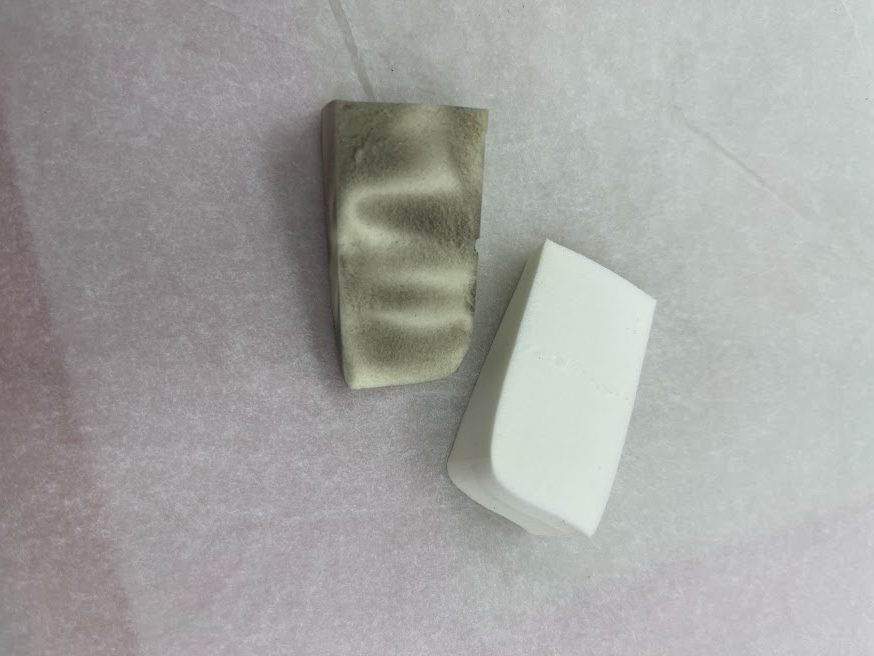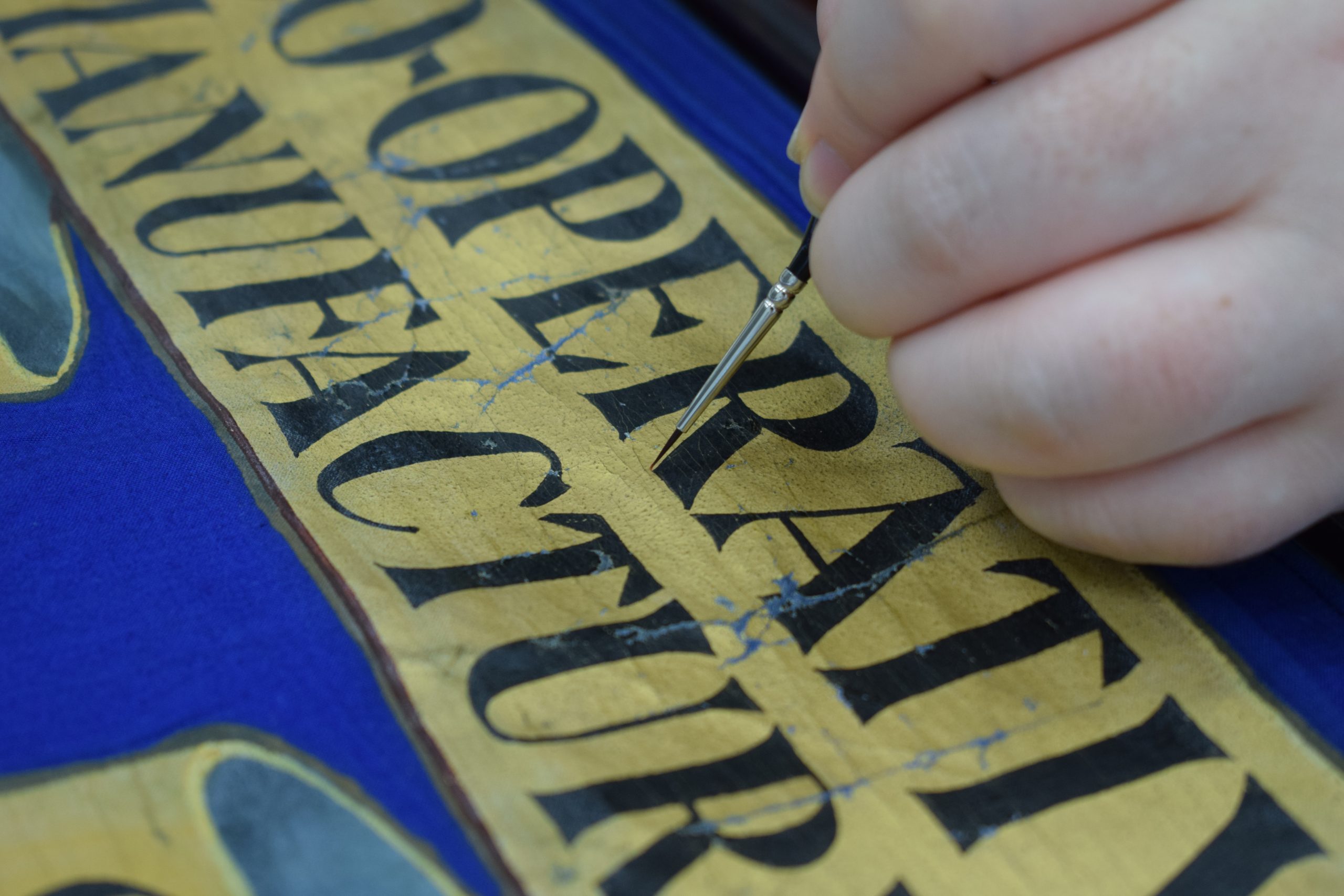Textile conservation is an essential role at People’s History Museum (PHM) due to our large collection of banners and other textile objects. The Conservation Studio at PHM is the site of this work to preserve, mend and examine the objects in our collection. Yubi Coates (they/them), Textile Conservation MPhil student at the University of Glasgow, spent their summer placement in The Conservation Studio, getting hands on with banners and flags. In this blog, they go into detail about what they learnt during their placement.
As part of the Textile Conservation MPhil at the University of Glasgow, students complete a summer placement between their first and second years. This placement usually lasts two months and is designed so students can get a feel for a professional conservation studio, continue to develop their skills, and put their studies into ‘real life’ practice. The Conservation Studio at People’s History Museum offers students a chance to work with large, complex objects alongside senior conservators Kloë Rumsey and Jenny van Enckevort, both experts in the conservation of banners.

During my first year I had only worked on small, purely textile objects – a mob cap and a tea-towel. I wanted to gain experience with painted textiles and large textiles as I knew they would be difficult to come across during term time, and banners were a perfect answer. Being able to spend time with experts in a lab designed to treat banners would allow me to witness a range of treatments and options, even if I didn’t have time to carry out every step myself.
Within a day or so of arriving I was taking part in the mechanical cleaning of a banner which had just come down from display. Mechanical cleaning is where we use ‘not wet’ methods to treat objects (not to be confused with ‘dry cleaning’, which is where liquids which are not water are used!). These methods could be low-power suction vacuums, brushes, sponges, or combinations of tools to remove dirt, dust, and soiling. I also had the opportunity later on to do more mechanical cleaning of a banner ‘in situ’, where it was still on display. While I was comfortable with the technique from my first year, it was exciting to treat large objects, one of which was still hanging!

During my time here I worked on two banners from start to finish. Both felt huge at the beginning of the placement (though now they feel quite small) and both had painted areas, decorative fringing and tassels, and lots of creasing. It was a challenge to handle complex aspects of the treatment, like using adhesives to prevent further damage to the paint, but I was able to take my time and do some research and experiments to help me build confidence in my skills.

I also gained experience in reconstructive conservation. In order to treat one of the banners, I had to remove the fringe and unpick some seams. The banner and the fringe were treated separately and then reattached. This was a big decision to make, but has led to stabilising the banner and more effectively treating it, but I was still quite nervous. The final results are very good, and I was proud of how I rose to the challenge.

My placement has helped me develop both as an individual practitioner and as a professional, and I have learned so many valuable lessons during these two months. I feel confident going into my final year that I can successfully treat a wider range of objects than before, and I cannot wait to be back at the bench, working on my next object.

Guest blogs are not curated by PHM but feature voices on topics relevant to the museum’s collection. Guest blogs do not necessarily reflect the views of PHM.
Visit PHM’s 2024 Banner Exhibition in the main galleries from 1 February 2024. Take a peek through The Conservation Studio viewing window in Gallery Two to see our Conservators at work!
Watch Yubi’s ‘Day in the Life‘ video on PHM’s Instagram profile and follow @phmconservation.
Learn more about Conservation at PHM.